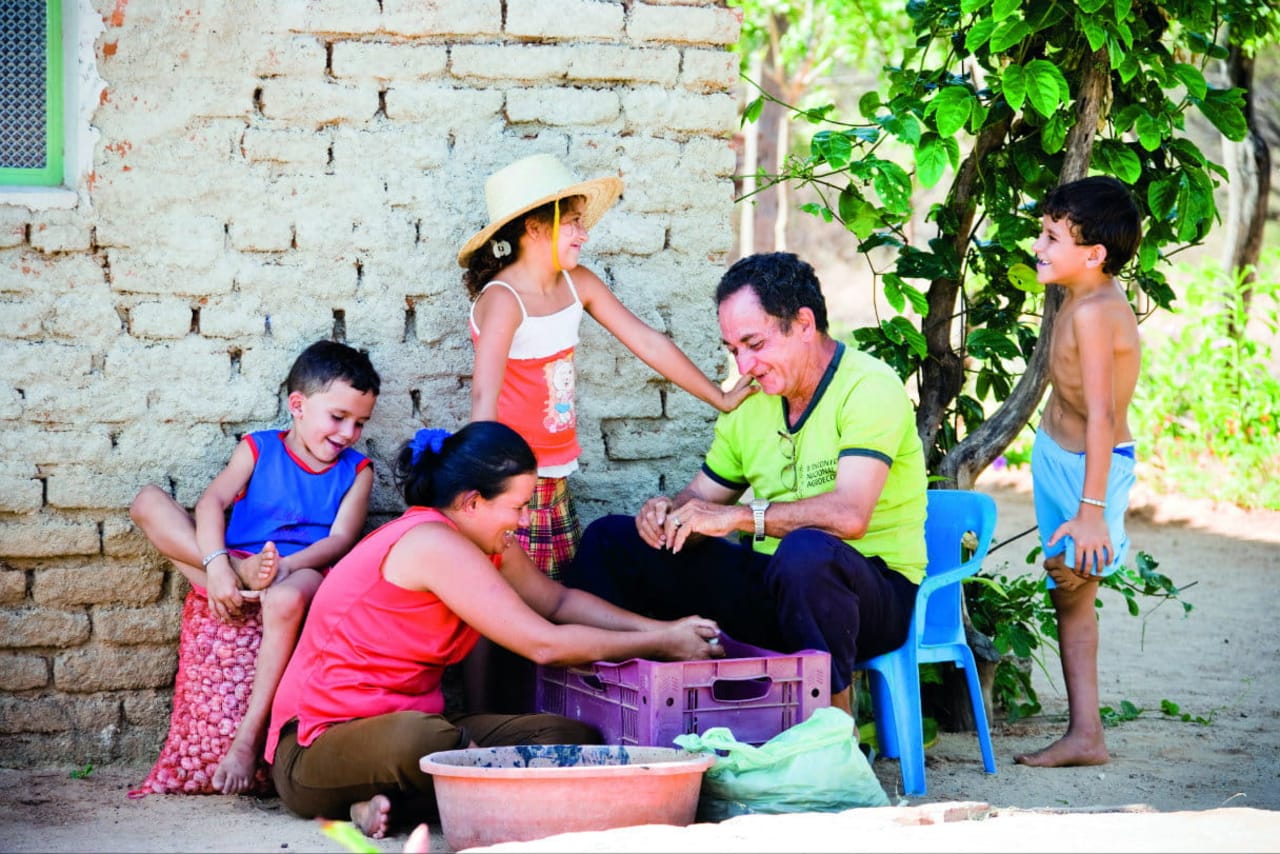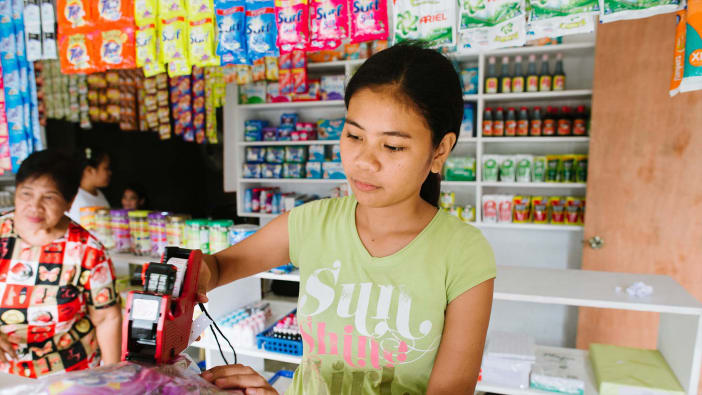The Bible often talks of God’s compassion for ‘the fatherless’ and his desire to set the lonely in families (Psalm 68:6). Good families are places where children are protected, nurtured and provided for. In loving families, children learn important life skills and feel a sense of belonging. Growing up and living without a family greatly increases our vulnerability.
The UN Convention on the Rights of the Child states:
‘The child, for the full and harmonious development of his or her personality, should grow up in a family environment, in an atmosphere of happiness, love and understanding.’
- Who is an orphan?
Unicef defines an orphan as a child who has lost one or both parents through death. According to Unicef, there are an estimated 140 million such orphans worldwide. But these statistics underestimate the problem and do not include ‘social orphans’. These are children and young adults who have lost any meaningful connection to their family. Social orphans include vulnerable children who may be living on the street, growing up in an orphanage or experiencing separation from their families due to trafficking, conflict or other issues.
In fact, millions of children known as orphans still have one surviving parent, grandparent or other family member. According to Save the Children, at least 80 per cent of children living in orphanages still have at least one parent alive.
- Residential care and poverty
Residential care institutions (including orphanages and children’s homes) have often been seen as the answer to the orphan challenge, and many have been set up with the best of intentions. However, some orphanages are run as businesses, where the children are seen as a way of bringing in income. This has sometimes led to children being trafficked into institutions.
In developing countries, all too often poverty is the reason that children end up in orphanages. Parents or family members may believe that an orphanage will give their children food, shelter and education, which they would otherwise struggle to provide. These so-called ‘pull factors’ increase the number of children placed into residential care unnecessarily. For example, although the number of vulnerable children in Cambodia has decreased, the number of orphanages increased by 75 per cent between 2005 and 2010. But no orphanage can provide the care and nurture of a loving, supportive family.
- Understanding the negative effects
Research has clearly shown that long-term institutional care is not in the best interests of children. It can negatively impact their lives in many different ways:
Serious delays in psychological and social development: Children lack the individual care and attention they need. They are less likely to develop the intellectual, physical, social and emotional skills appropriate for their age. They have less chance to learn the life skills they will need to live independently in the future.
Attachment problems: Children grow up with frequent changes in staff, volunteers and visitors. This means they do not develop the strong, lasting relationships they need.
Dependency mindset: In institutions, someone else is always responsible for meeting children’s basic needs and making decisions on their behalf. Children are not usually given opportunities to take responsibility for themselves based on a relationship of trust. This makes it harder for them to live independently as adults.
Trafficking and abuse: Many institutions do not have child protection policies and may not carry out background checks for visitors and staff. This puts children at risk of trafficking and physical and sexual abuse.
Separation from society: Children in residential care usually grow up separated from their family and community. They often struggle to rejoin the community when they leave.
Young people are very vulnerable when they leave residential care, and many institutions do not have strategies for supporting them through this process. A long-term study from Russia showed that one in five orphans leaving an institution turned to crime, one in seven fell into prostitution and one in ten committed suicide (Judith Harwin, Children of the Russian state 1917–1995).
- A better way
The good news is that around the world people are beginning to realise there are better ways of caring for orphans and vulnerable children. There is a range of options:
Family strengthening: We can strengthen and support families, so that they do not place children in orphanages to begin with. This can include providing parenting classes, day care and income-generating activities. It is important to help parents realise that family is for life and that they can usually provide a better upbringing for their child than an orphanage can.
Reuniting children with their birth families: If it is possible and safe, the best option is to reunite children who are in residential care with their families. This involves trying to address the problems that led to their separation from the family, wherever possible.
Kinship care: If reuniting children with their birth families is not possible, kinship care is an option. Many orphans will have other family members who would be willing to care for them – aunts, uncles, grandparents, an older sibling or another member of the extended family. It is often possible to trace relatives and support them to care for the child.
Foster care: Foster care is when a family cares for a child who is not biologically related to them. Fostering can be a temporary measure while efforts are made to reunite children with their family. It can also be a longer-term option. In some countries it can be a way of providing a permanent family for a child.
Adoption: When it is not possible to reunite children with their family or relatives, adoption may be an option. This is when parents agree legally and permanently to care for a child who is not biologically their own. Adoption is easiest for the child when it happens within the child’s own country. International adoption is usually a more disruptive option, so the UN Convention on the Rights of the Child considers local adoption or foster care to be preferable.
There is sometimes a place for residential care (for example, this may be needed for a child in crisis while other options are being investigated). But in most cases this should be seen as a last resort and not as a long-term solution. If residential care is necessary for a time, it should be as ‘family-like’ as possible, in small group homes within the community rather than in large orphanages.
Those in charge of a child’s care should work through this range of alternative care options to see what is best for the child.
- National policies are changing
A growing number of countries are now putting these ideas about alternative care into practice and making them their official policy. For example, in 2012 Cambodia announced a new policy aimed at keeping children out of institutions and preferring family-based care. As well as being better for children, these principles make good financial sense. In Uganda, for example, a study showed it costs up to 14 times more to run an orphanage than to care for children within the community (Unicef).
What can we do?
The church can play a powerful role in changing the way we care for orphans and vulnerable children. The World Without Orphans movement has united Christians, churches and organisations around the world to work together towards family-based care. Beginning in the Ukraine, it has initiated national movements in more than 26 countries. As a result of its work, the number of children being fostered or adopted locally has increased.
There is a number of things individuals, churches and organisations can do to improve orphan care. Individuals can consider becoming foster or adoptive parents, and encourage others to do the same. Churches can develop programmes to strengthen families and support orphans within their churches and communities. Directors of residential care centres can explore ways of transitioning to provide family and community strengthening services. We can all advocate to our governments for policies that prioritise family-based care. By uniting with others who have the same vision, we can work towards a world where every child has the chance to grow up within a loving family.
World Without Orphans
Website: www.worldwithoutorphans.org
Email: [email protected]
Knotty problem
Question: ‘If an orphanage is run like a family, can it still cause difficulties for children?’
Answer: Some orphanages try to provide ‘family-like’ care. They may only care for small numbers of children. Or they may put children into ‘family groups’, where they are looked after by a caregiver in smaller homes within a compound. While this is much better than large institutions, it still does not replace a family in a true sense.
Even small family-like orphanages have staff changes and more fixed rules and routines than a family. Orphanages that arrange themselves as small homes in a compound still create their own community. They do not place a child in a real community and the broader society. This will affect the children when they leave. Orphanages care for a large number of children over the years. They cannot be parents to all of those children through every stage of their life.
The negative effects of growing up in an institution can be reduced through family-like environments, but not necessarily removed. Therefore, while family-like residential care is better than large institutional care, it is still not the best option if appropriate family or community care can be found.
Answer adapted from ACCI Kinnected’s Frequently asked questions document.










